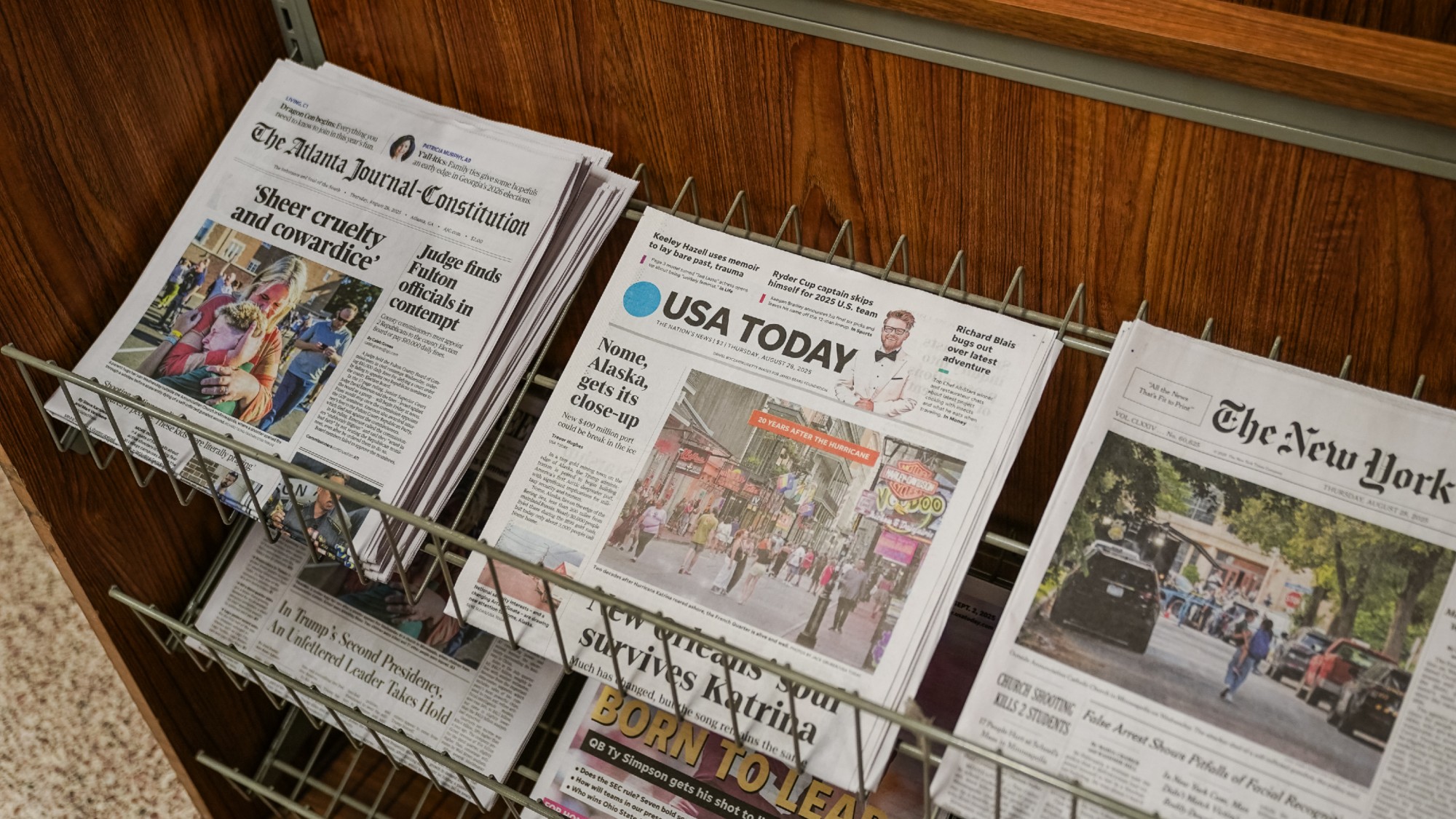Better safe than sorry
Political leaders and news organizations have been unfairly pilloried for hyping the dangers of Irene. Really now — should they have ignored the threat instead?


Did the media and the government oversell the dangers of Hurricane Irene?
Almost as soon as the winds in New York City began to slow, the media began turning a critical eye on the hyperbole surrounding the storm. Before it made landfall, federal and state governments warned of disaster from North Carolina to the top of the Atlantic seaboard. When, thankfully, the storm turned out to be weaker than predicted — much weaker than some predictions — the natural response was to criticize those who set off the alarms in the first place.
For instance, media critic Howard Kurtz of The Daily Beast blasted cable news networks that were "utterly swept away by the notion that Irene would turn out to be Armageddon. … But the apocalypse that cable television had been trumpeting had failed to materialize. And at 9 a.m., you could almost hear the air come out of the media's hot-air balloon of constant coverage when Hurricane Irene was downgraded to a tropical storm." The New Jersey Star-Ledger noted in its Sunday evening coverage that Irene mainly provided "great photo opps for politicians like New Jersey Governor Chris Christie and New York City Mayor Michael Bloomberg." George Will called Irene's media coverage "manufactured hysteria."
The Week
Escape your echo chamber. Get the facts behind the news, plus analysis from multiple perspectives.

Sign up for The Week's Free Newsletters
From our morning news briefing to a weekly Good News Newsletter, get the best of The Week delivered directly to your inbox.
From our morning news briefing to a weekly Good News Newsletter, get the best of The Week delivered directly to your inbox.
The storm was bad enough to kill dozens of people across 11 states. Without the warnings and the hyperbole, would the death toll have gone higher?
There is a legitimate concern about the danger of hyperbole in crisis-management situations. If every storm that approaches an American shore gets billed as another Katrina — a comparison often heard over the past week — the people who warnings are intended to help will start disregarding them. We saw the reluctance of residents in Irene's path to follow evacuation requests; if they hear dire warnings of disasters that fail to materialize, then compliance with safety measures and evacuation orders will decrease, and put people at more risk. Hyperbolic estimates of damage and lack of essential services can also prompt unnecessary hoarding and artificial shortages of water and food that will end up making those goods both more expensive and less available even after an event-free storm.
Fortunately, the damage done by Irene came is far less than predicted — but the damage is not insignificant. Initial estimates of economic value lost have come to $7 billion, and that may go up as flooding continues in some areas. More significantly, at least 38 people died in the storm — as far south as Florida and as far west as Pennsylvania. The victims include an 89-year-old Connecticut woman who died when downed power lines set her home on fire, a New Jersey EMT who died in a Princeton flood, and a middle-aged New York man who had tried to rescue a child in a flood and got electrocuted by power lines.
Clearly, this was not a "manufactured" event. Irene may not have packed the punch that many predicted, but for those families and communities across 11 states who have to bury their dead and repair their homes, it wasn't merely a photo opportunity. It was a real disaster, even if its scope was much more limited than initially feared.
A free daily email with the biggest news stories of the day – and the best features from TheWeek.com
Furthermore, we have a "dog that didn't bark" dimension to this story. The storm was bad enough to kill dozens of people across 11 states. Without the warnings and the hyperbole, would the death toll have gone higher? None of the deaths appears to have resulted from excess zeal to seek safety or shelter. In fact, a number of them came from people who continued their recreational activities despite the storm. How many more were convinced to stay home instead?
A significant amount of criticism has been directed at political leaders for supposed grandstanding during the storm — including Bloomberg, Christie, and President Barack Obama. However, that ignores a couple of political realities. Had these leaders not taken the storm seriously and it turned out worse — or with the 38 deaths, perhaps even turned out as it did — the same critics would be pillorying them for a lack of leadership. The lessons of Katrina don't just apply to the nuts and bolts of emergency response, after all, but also to political leadership and the perceptions of crisis management.
As far as these leaders taking advantage of "photo opps" and television moments, that's almost a given for governors and presidents of any political party. We expect executives to publicly demonstrate leadership, especially in crisis situations. They generally don't reap political benefit from simply meeting expectations — they have much more risk of political damage if they fail to do so, which is why governments will usually err on the side of over-warning. Two months from now, nobody's appraisal of these three politicians' leadership skills will have anything to do with Irene.
Hurricanes are notoriously hard to predict — in origination, path, and impact. Given all the variables in play with Irene and its eventual deadly impact, it's difficult to argue that the media and government overreacted to it. Perhaps we should just be grateful that it didn't turn out as bad as predicted and leave it at that.
Edward Morrissey has been writing about politics since 2003 in his blog, Captain's Quarters, and now writes for HotAir.com. His columns have appeared in the Washington Post, the New York Post, The New York Sun, the Washington Times, and other newspapers. Morrissey has a daily Internet talk show on politics and culture at Hot Air. Since 2004, Morrissey has had a weekend talk radio show in the Minneapolis/St. Paul area and often fills in as a guest on Salem Radio Network's nationally-syndicated shows. He lives in the Twin Cities area of Minnesota with his wife, son and daughter-in-law, and his two granddaughters. Morrissey's new book, GOING RED, will be published by Crown Forum on April 5, 2016.
-
 Bari Weiss’ ‘60 Minutes’ scandal is about more than one report
Bari Weiss’ ‘60 Minutes’ scandal is about more than one reportIN THE SPOTLIGHT By blocking an approved segment on a controversial prison holding U.S. deportees in El Salvador, the editor-in-chief of CBS News has become the main story.
-
 ‘Journalism is on notice’
‘Journalism is on notice’Instant Opinion Opinion, comment and editorials of the day
-
 A foodie guide to Edinburgh
A foodie guide to EdinburghThe Week Recommends Go all-out with a Michelin-starred meal or grab a casual bite in the Scottish capital
